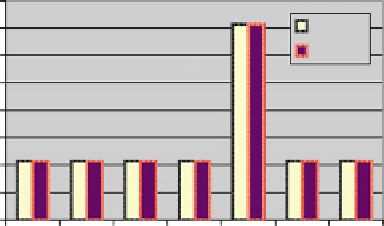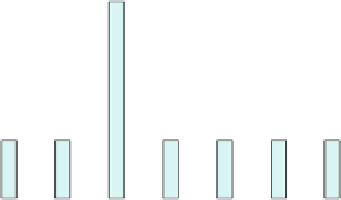Information Technology Reference
In-Depth Information
Fig. 13.4
Actor 2's and 3's
views of other's view of
object 1
0.4
0.35
Actor2
Actor3
0.3
0.25
0.2
0.15
0.1
0.05
0
0
1
2
3
4
5
6
Fig. 13.5
Actor 2's and 3's
views of other's view of
object 2
0.4
0.35
Actor2
Actor3
0.3
0.25
0.2
0.15
0.1
0.05
0
0
1
2
3
4
5
6
2 and 3 have experienced something they can graduate internally but cannot express,
but Actor 4 lacks the experience that even allows identification of the dimension.
The actors are now exposed to the second object, Circle Music. A similar process
of adaption takes place. Owing to the fact that Actors 1, 2 and 3 have one item
of prior experience they can now compare that emotional effect with the effect of
object two on an identified dimension. This gives them a better and a subtler means
of communication in that they can convey internal comparisons.
To represent the experience of attending a concert (event 1) we instruct our model
through queries. Note that all interactions are called “queries” in the schematic
functional programming language 'Clarity' from which the modal was constructed.
(
See Drawing Programs, Tom & Jan Addis, pub Springer 2010
. Also see Addis
and Townsend-Addis
1995
,
1998
,
2001
,
2002
.
A free version of 'Clarity' is avail-
able at '
www.clarity-support.co.uk
' including the belief system and other example
programs
.)
QUERY
>
actor_only_concerts (no_query) #1
True
Each actor, knowing its own response to the objects, then modifies its initial neutral assess-
ment of others' views. The function 'show_views' displays all actors' perception of other
actors for all objects. For clarity we have graphed the results. Since this is the view of Actor
1 concerning the others we have also dropped its view for simplicity (Fig.
13.4
,
13.5
)
QUERY
>
show_views #1
True





























